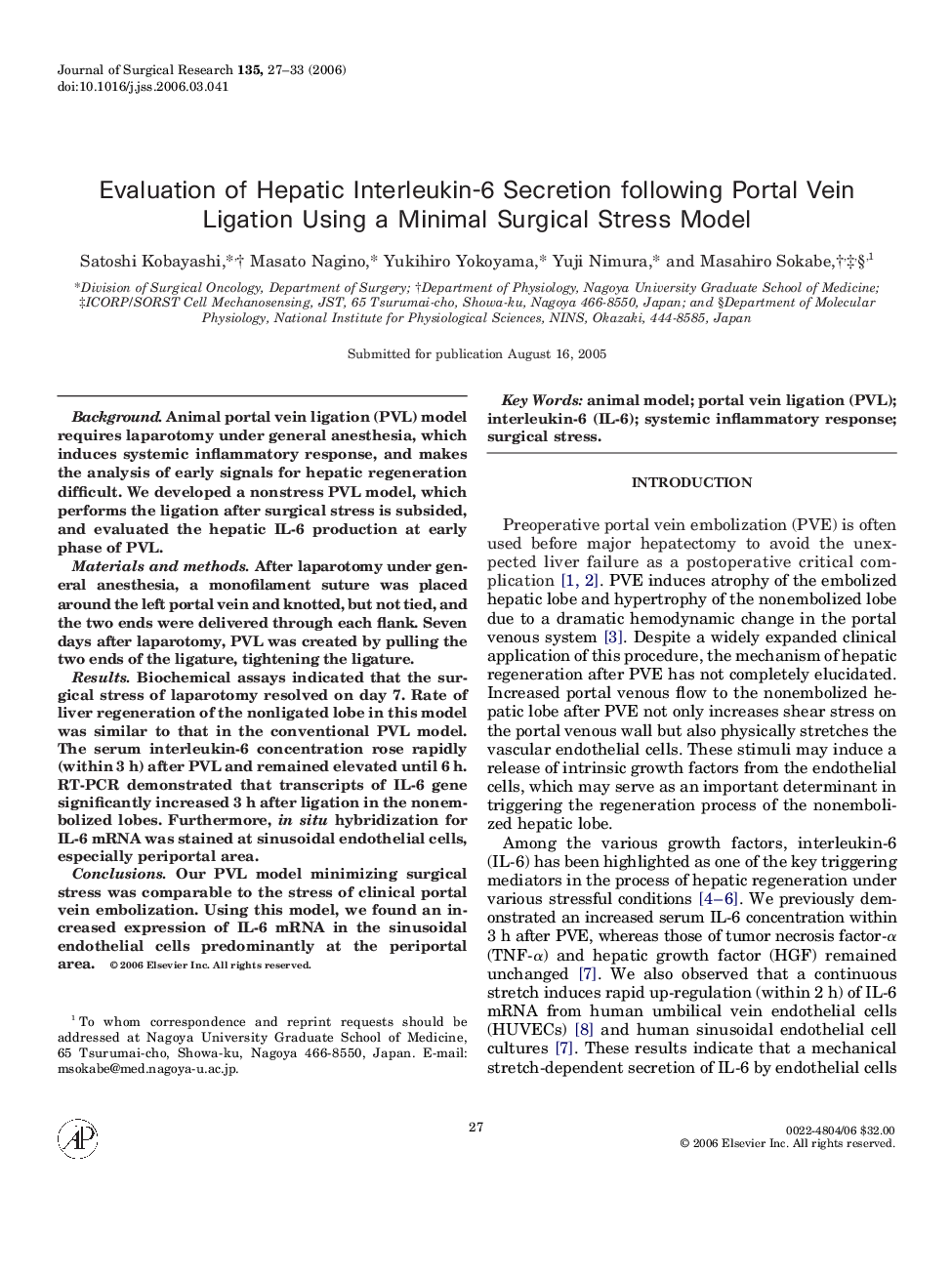| Article ID | Journal | Published Year | Pages | File Type |
|---|---|---|---|---|
| 4304923 | Journal of Surgical Research | 2006 | 7 Pages |
BackgroundAnimal portal vein ligation (PVL) model requires laparotomy under general anesthesia, which induces systemic inflammatory response, and makes the analysis of early signals for hepatic regeneration difficult. We developed a nonstress PVL model, which performs the ligation after surgical stress is subsided, and evaluated the hepatic IL-6 production at early phase of PVL.Materials and methodsAfter laparotomy under general anesthesia, a monofilament suture was placed around the left portal vein and knotted, but not tied, and the two ends were delivered through each flank. Seven days after laparotomy, PVL was created by pulling the two ends of the ligature, tightening the ligature.ResultsBiochemical assays indicated that the surgical stress of laparotomy resolved on day 7. Rate of liver regeneration of the nonligated lobe in this model was similar to that in the conventional PVL model. The serum interleukin-6 concentration rose rapidly (within 3 h) after PVL and remained elevated until 6 h. RT-PCR demonstrated that transcripts of IL-6 gene significantly increased 3 h after ligation in the nonembolized lobes. Furthermore, in situ hybridization for IL-6 mRNA was stained at sinusoidal endothelial cells, especially periportal area.ConclusionsOur PVL model minimizing surgical stress was comparable to the stress of clinical portal vein embolization. Using this model, we found an increased expression of IL-6 mRNA in the sinusoidal endothelial cells predominantly at the periportal area.
